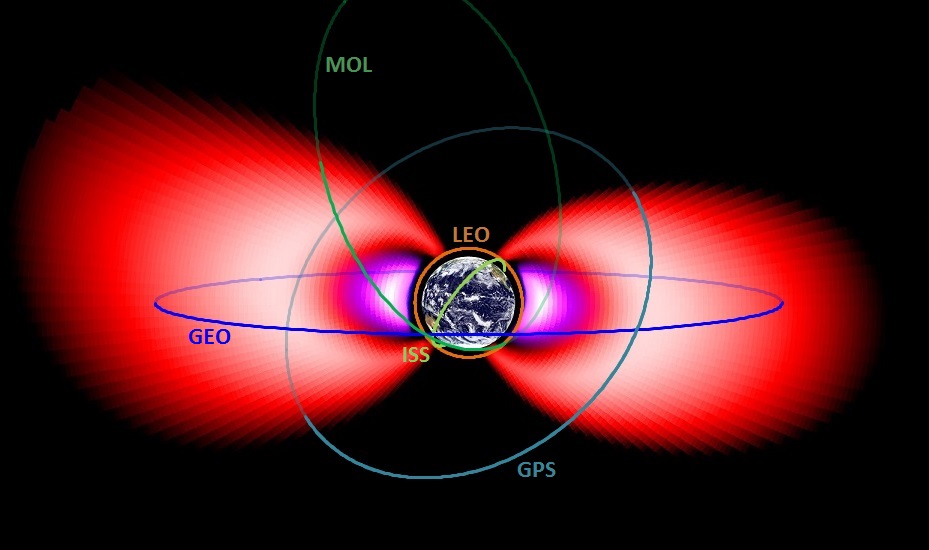IRENE-AE9/AP9/SPM: Radiation Belt and Space Plasma Specification Models Air Force Research Laboratory (AFRL)
- AE9AP9 Home
- News
- Factsheet
- Quick Reference
- Energy and spatial coverage
- Architecture
- Data sets
- Modes for running the model
- Recommended time sampling
- Known issues and limitations
- Versions (public releases)
- Future version plans
- Best Practices for Generating Space Environment Specifications with Modern Tools
- Radiation belt missions factsheet
- Documents
- Validations and evaluations
- Downloads
- AE9/AP9/SPM Team
- DSX
IRENE-AE9/AP9/SPM is a suite of models for the fluxes of radiation belt and plasma particles in near-Earth space for use in space system design, mission planning, and other applications of climatological specification. Denoted AE9, AP9, and SPM for energetic Electrons, energetic Protons, and Space Plasma Model, respectively. The new name--International Radiation Environment Near Earth, or IRENE--denotes the participation of international collaborators. The current models are derived from 45 data sets measured by satellite on-board sensors. These data sets have been processed to create maps of the particle fluxes along with estimates of uncertainties from both imperfect measurements and space weather variability. Users can obtain statistical confidence intervals, e.g. the median and 95th percentile, for fluxes and derived quantities, supporting design trades.
Two methods for interrogating the models are provided, a command-line version and a graphical user interface. Given satellite orbital elements or an ephemeris, the model returns specified quantities of flux, fluence, or dose, and chosen statistics for these quantities from run modes of mean, perturbed mean, or Monte-Carlo scenarios. Both omnidirectional and unidirectional fluxes/fluences are supported. The model is not currently predictive in terms of providing quantities for a specified solar cycle phase, but the statistics provided encompass the climatology observed over a solar cycle.
The model is available as an executable version for Windows. For developers or for UNIX users, the source code may be requested from AFRL. The distribution package includes the model software, a user’s guide, validation reports, and other general documentation. Full technical documentation will be available as completed from the VDL web site.
The initial release, V1.00, was released in 2012. In 2015 V1.20 was released, including new flux maps for AE9, AP9, SPME (electrons) and SPMH (protons) based on new data sets. In 2017 V1.35 introduced support for parallelized processing. Later in 2017 the V1.50 release updated flux maps for AE9 and AP9 with Van Allen Probes data sets, plus other data sets including our first internationally contributed data set, from Azur. In 2022 V1.57 introduced kernels-based effects calculations with a kernel for dose vs. depth as well as additional accumulator features. In 2024 V1.58 added variable timestep ephemeris generation and additional adiabatic quantity outputs.
IRENE-AE9/AP9/SPM is designed with incremental improvements in mind, and forthcoming versions are planned to introduce new features such as: additional generic effects calculations based on pre-computed effects kernels; inclusion of untrapped particle hazards such as solar protons; and a sample historical solar cycle fly-through option. The flux maps will also be upgraded with new data sets as they become available. In particular, data from NASA’s Van Allen Probes and from AFRL’s Demonstration and Science Experiments (DSX) spacecraft will be included in future versions.


